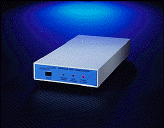 |
J
& S Instruments, Inc.
Wireless RS232Spread Spectrum Data Transceivers |
 |
J
& S Instruments, Inc.
Wireless RS232Spread Spectrum Data Transceivers |


| The DGR-115 / 115H wireless rs232 spread spectrum
data transceivers provide reliable long range data communications. Using
the superior frequency hopping spread technology, FreeWave transceivers
are capable of uncompressed data rates of 115.2 KBaud over distances of
20 miles or more, meeting the data communications needs in a wide
variety of applications.
The DGR-115 / 115H product family operates at 1 Watt output power, the maximum output power allowed under part 15 rules. As well as providing long range reliable data links, FreeWave transceivers set up quickly and incur no ongoing fees, unlike cellular and land line communications. The FreeWave transceiver operates in either point to point or point to multipoint modes, selectable through any terminal program. Repeaters may be deployed in either mode to extend the range of the link, not by plugging two units in back to back as is the case with most radios, but by programming the DGR-115 to operate as a store and forward repeater. With up to two repeaters in a link and using optional external antennas, links of 60 miles and beyond are possible. All transceivers are assigned a unique electronic serial number at the factory, providing complete control of who does and who does not have access to the data. An optional mode allows the transceiver to respond to a set of AT commands.
The DGR-115 and DGR-115H transceivers are manufactured at the FreeWave Technologies factory in Boulder, Colorado, where tight control is exercised to ensure consistent quality. Every unit shipped is tested from -40° C to +75° C, and must also pass real world data and link tests. FreeWave spread spectrum transceivers have been used on (to name but a few) tanks, aircraft, speed boats, yachts, race cars, and earth movers, and in environments ranging from offices to volcanoes to the Antarctic.
As a final note . . . is Frequency Hopping really better than direct sequence? We could have pages and pages of technical arguments expounding upon the merits of Frequency Hopping but the solution is really much more simple. The next time someone tries to tell you that their 900 MHz direct sequence modem is better than our 900 MHz hopper ask them to do a simple experiment: establish a link with the direct sequence modems, then set up a side by side parallel link with the FreeWave modems and watch what happens.
|
| Technical Specifications |
| Item | Specification |
| Range* | 20 Miles |
| RS232 Data Throughput ** | 1200 Baud to 115.2 KBaud |
| RS232 Interface | Asynchronous, Full duplex |
| System Gain | 140 dB |
| Minimum Receiver Decode Level | -110 dBm @ 10-4 raw BER -108 dBm @ 10-6 raw BER |
| Operating Frequency | 902 - 928 MHz |
| Modulation Type | Spread Spectrum, GFSK |
| Spreading Code | Frequency Hopping |
| Hop Patterns | 15 (User Selectable) |
| Output Power | 1 Watt (+30 dBm) |
| Error Detection | 32 Bit CRC With Packet Retransmit |
| Antenna | 3 Inch Whip Provided (DGR-115 Model) Non-standard SMA Connector Allows Use Of External Directional or Omni- Directional Antennas. |
| Power Requirements | 10.5 - 18.0 VDC (AC Wall Adapter Provided) |
| Power Consumption | 600 mA Transmit 100 mA Receive 180 mA Average |
| Connector | RS232 9 Pin Female, 9 Pin Male to 9 Pin Female Straight Through Cable Provided |
| Unit Address | Unique, Factory Preset |
| Operating Modes | Point to Point Point to Multipoint Store and Forward Repeater |
| Operating Environment | -40° C to +75° C |
| FCC Identifier | KNY-DGR-115 |
| DOC (Canada) Identifier | 2329 101 340A |
| * Line Of Sight Distance Using Supplied Whip Antenna |
| ** Uncompressed Throughput Measured Assuming 75% Frequency Availability |
![]()
Homepage | Products | Search | Corporate Information
© Copyright 2008, J & S Instruments, Inc. All rights reserved.